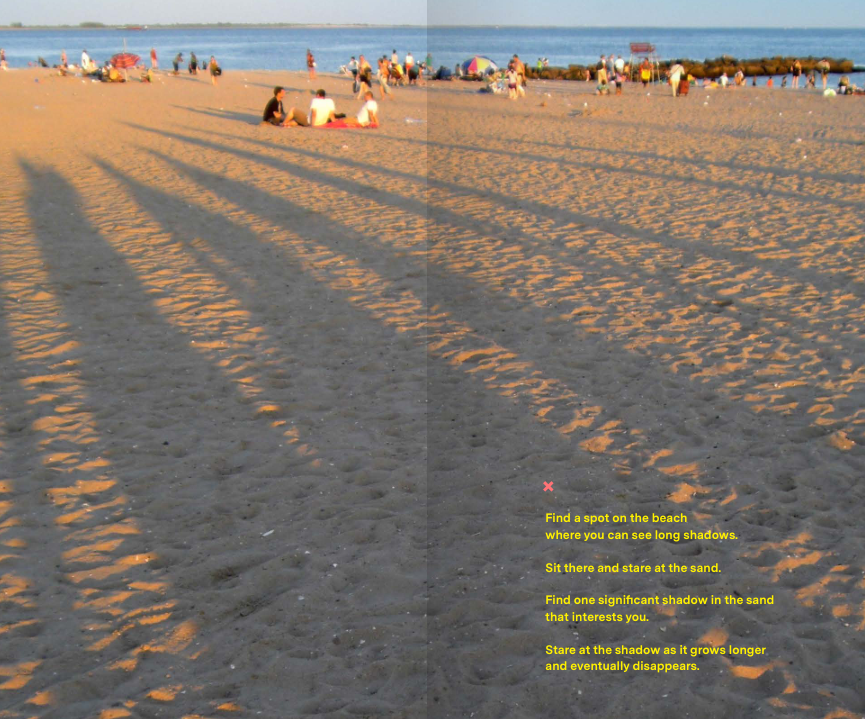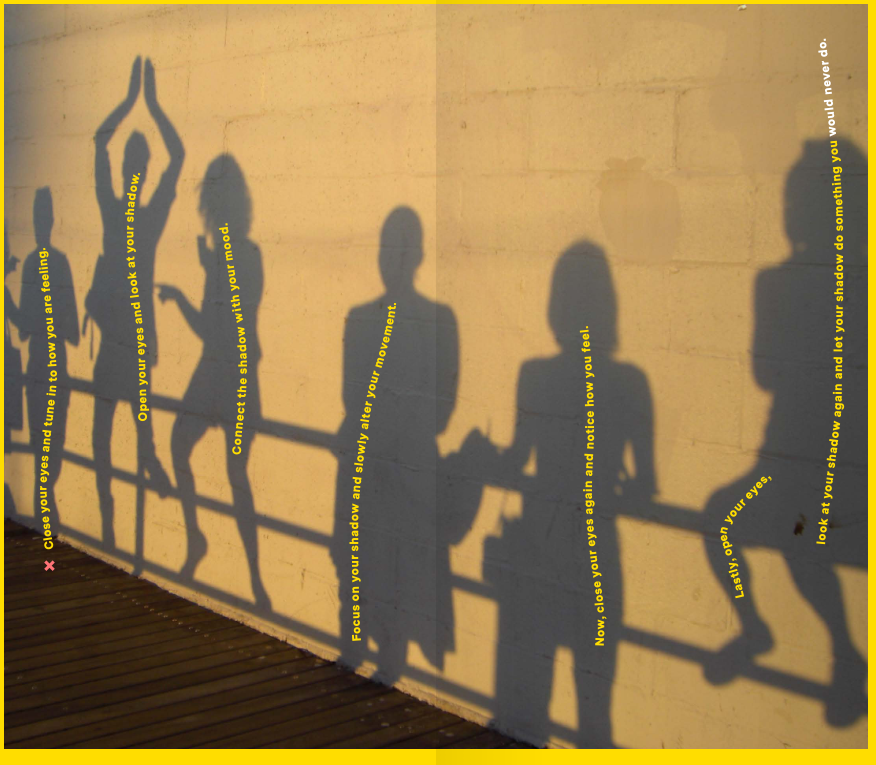created 2025-03-04, & modified, =this.modified
rel: Walking as an Artistic Practice by Ellen Mueller Performance Art From Futurism to Present RoseLee Goldberg
Why I'm reading
Similar to Walking as an Artistic Practice by Ellen Mueller and trying to read about how walking and observing can be poetic, or viewed differently.
This seems to be like a guide, containing best practices and ideas for engaging others in an artistic walk.
Along with theatrical/LARP style exercises.
It’s slightly cheesy but seems to have some Survey of Shadows prompts.
A typical walk contains 8 to 12 prompts for the public, tied to a theme. They last 75-90 minutes. They hold 12 people, but necessitate at least 6.
On the day of the walk, arrive to the walk location 60–90 minutes early and walk the route. Know that the first 5–10 minutes of the walk will be weird. Most people are unfamiliar with the participatory walk form and might be nervous. They’re also feeling you out. Accept this weirdness and breathe through it. You’ll all become more comfortable as the walk progresses.
Don’t walk backwards while talking or have the group walk in a single line. These are tour-guide tropes that are also unnecessarily authoritative.
Find a place in the room to occupy— lie down on the bed, sit on a chair or on the floor, look out the window, etc. Imagine that you are alone in this room and that everyone else is here on a different day in a parallel universe. Once settled in, remember when you were in a hotel room at another time: a family vacation, on a business trip or with a lover. After five minutes, leave the room without talking.
Close your eyes and tune in to how you are feeling. Open your eyes and look at your shadow. Connect the shadow with your mood. Focus on your shadow and slowly alter your movement. Now, close your eyes again and notice how you feel. Lastly, open your eyes, look at your shadow again and let your shadow do something you never would do.

Choose a street tree on this block. Trace the shadow of the tree in chalk. As your draw, consider your relationship with the tree. When you exhale visualize the tree absorbing your carbon dioxide. As you inhale consider some of the oxygen was exhaled from the tree. Stand or sit in the chalk outline and consider the tree’s shade. Touch the pavement or sidewalk in the tree’s shade. Feel the different temperatures. Try to develop and intuitive understanding of the tree’s active role in shaping your environment by slowing your perception to make that of the tree which is rooted in place connected to earth and sky. Slow your breathing and imagine the tree growing through summer, shedding in winter.
Make a time capsule.
Hand out a transparency and marker and walk around a building sketching the contours/outlines of buildings. Make it flat like on a screen, allowing overlap of buildings. When you’ve sketched what can fit into the frame of your transparency, then, fill the contours with color or patterns.
Make a shadow block
It’s hot out. Let’s give the sidewalk a break from the heat. With our bodies, let’s construct the largest (tallest and widest) shadow that we can. Let’s take two minutes and then freeze into place. Once everyone is frozen in place Ok, now look and see the gaps that have light peeking through. Let’s fill in all the gaps of light. Once the gaps of light are filled in Now, freeze for ten seconds.

